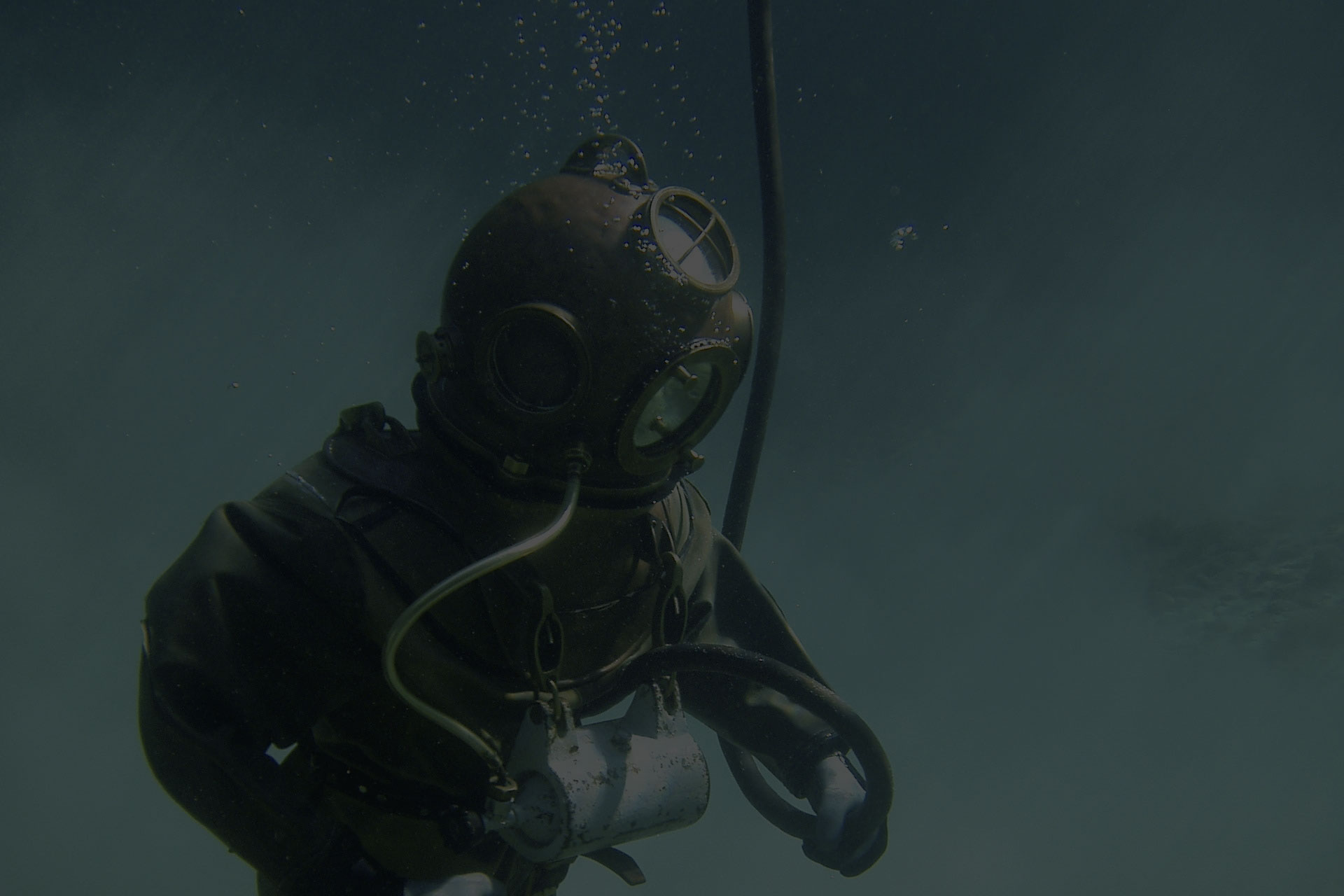Equipment adaptations for deeper diving:
 The gear used for profound diving will depend on both depth and the sort of diving. Scuba is bound to equipment that might be transported by the diver, or is deployed by the dive team easily, while surface provided diving equipment can become more extensive, and keeps above the normal water where it is controlled by the support team. Re-breathers manage gas much more than open circuit scuba efficiently, but are inherently more technical than wide open circuit scuba. Usage of helium-based deep breathing gases such as trimix reduces nitrogen narcosis and stays on below the limitations of air toxicity.
The gear used for profound diving will depend on both depth and the sort of diving. Scuba is bound to equipment that might be transported by the diver, or is deployed by the dive team easily, while surface provided diving equipment can become more extensive, and keeps above the normal water where it is controlled by the support team. Re-breathers manage gas much more than open circuit scuba efficiently, but are inherently more technical than wide open circuit scuba. Usage of helium-based deep breathing gases such as trimix reduces nitrogen narcosis and stays on below the limitations of air toxicity.
A diving shot, a decompression trapeze or a decompression buoy can help divers control their ascent and go back to the top at a posture which is often supervised by their surface support team at the end of the dive.
Decompression can be accelerated by using combined respiration gas mixtures including lower proportions of inert gas especially. In-water decompression can be reduced by using dry out bells and decompression chambers.
Hot-water suits can prevent hypothermia because of the high heat reduction when working with helium based deep breathing gases.
Diving lockout and bells expose the diver to the immediate underwater environment for less time, and provide a comparatively safe shelter that will not require decompression, with an arid environment where in fact the diver can relax, take refreshment, and when necessary, receive medical in a disaster.
 Inhaling gas reclaim systems reduce the expense of using helium based mostly breathing gases, by recovering and recycling exhaled surface offered gas, analogous to re-breathers for scuba.
Inhaling gas reclaim systems reduce the expense of using helium based mostly breathing gases, by recovering and recycling exhaled surface offered gas, analogous to re-breathers for scuba.
By far the most radical equipment version for profound diving is to isolate the diver from the immediate pressure of the surroundings, using armored atmospheric diving suits that allow diving underwater labyrinth. These rigid, articulated exoskeleton suits are covered against drinking water and withstand exterior pressure while providing life support to the diver for many hours at an interior pressure of around normal surface atmospheric pressure. This avoids the issues of inert gas narcosis, decompression sickness, barotrauma, air toxicity, high work of respiration, compression arthralgia ruthless stressed symptoms and hypothermia, but at the expense of reduced dexterity and mobility, logistical problems because of the mass and almost all the suits, and high equipment costs.
Procedural adaptations for deeper diving:
Procedural adaptations for profound diving can be labeled as those types of procedures for operating specific equipment, and the ones that connect with the issues induced by contact with high ambient stresses straight.
The main procedure for interacting with physiological problems of deep breathing at high ambient stress associated with profound diving is decompression. That is essential to prevent inert gas bubble development in the physical body tissue of the diver, which can cause severe damage. Decompression steps have been produced for a huge selection of pressure exposures, using a huge selection of gas mixtures.
Gas management techniques are essential to ensure that the diver has usage of appropriate and sufficient inhaling gas all the time through the dive, both for the designed dive and for just about any foreseeable contingency fairly. Scuba gas management is logistically more technical than surface supply, as the diver must either carry all the gas, are required to follow a route where previously arranged gas supply depots have been create (stage cylinders). You must count over a team of support divers who’ll provide additional gas at pre-arranged alerts or tips on the prepared dive.
On very profound scuba dives or on situations where long decompression times are prepared, this is a common practice for support divers to meet up with the major team as decompression puts a stop to check if indeed they need assistance, and these support divers will most likely bring extra gas materials in case there is need. The usage of re-breathers can decrease almost all the gas supplies for long and deep scuba dives, at the price tag on more technical equipment with an increase of potential failure modes, requiring more technical procedures and higher procedural task loading.
 Surface offered diving distributes the duty loading between your divers and the support team, who stay in the relative basic safety and comfort of the top control position. Gas resources are limited only with what is offered by the control position, and the diver only must hold sufficient bailout capacity to attain the nearest host to safety, which might be a diving lockout or bell submersible.
Surface offered diving distributes the duty loading between your divers and the support team, who stay in the relative basic safety and comfort of the top control position. Gas resources are limited only with what is offered by the control position, and the diver only must hold sufficient bailout capacity to attain the nearest host to safety, which might be a diving lockout or bell submersible.
Saturation diving is an operation used to lessen the risky decompression a diver is subjected to throughout a long group of profound underwater exposures. By keeping the diver under ruthless for your job, in support of decompressing at the ultimate end of several days and nights to weeks of underwater work, an individual decompression can be carried out at a slower rate without adding much overall the perfect time to the job. Through the saturation period the diver lives in a pressurized environment at the top, and is carried under great pressure to the underwater work site in a sealed diving bell.


